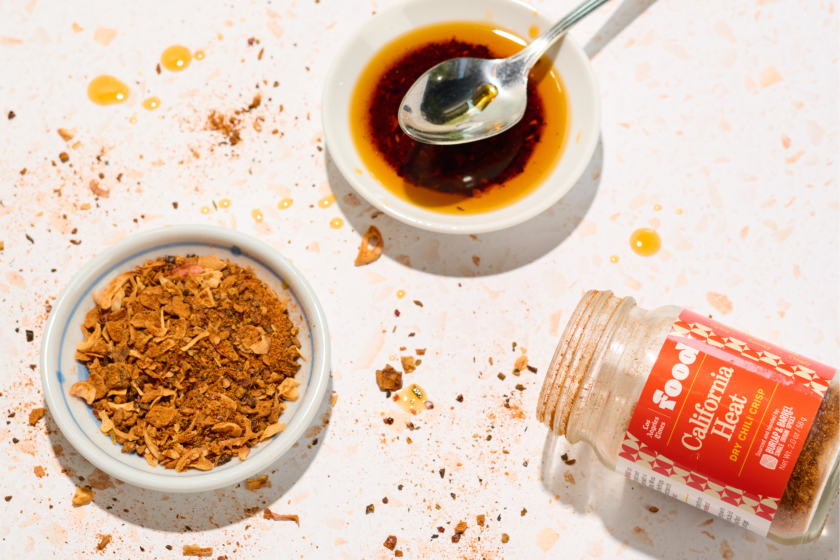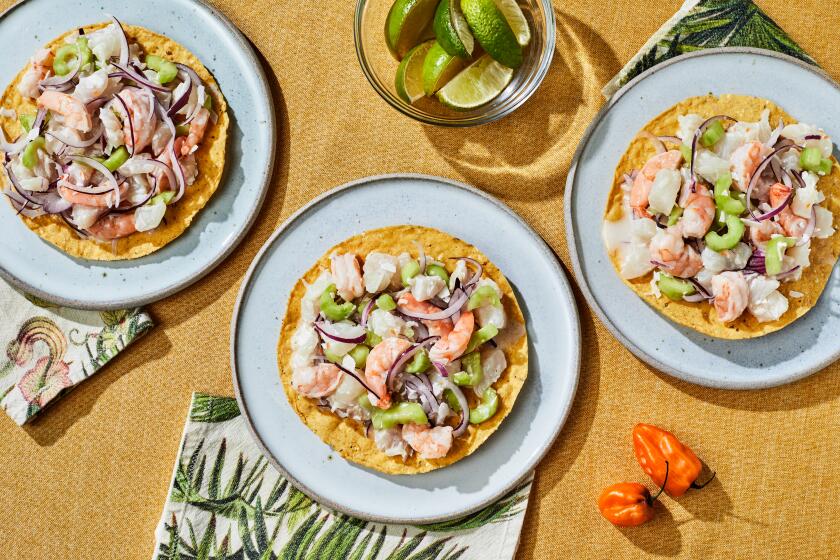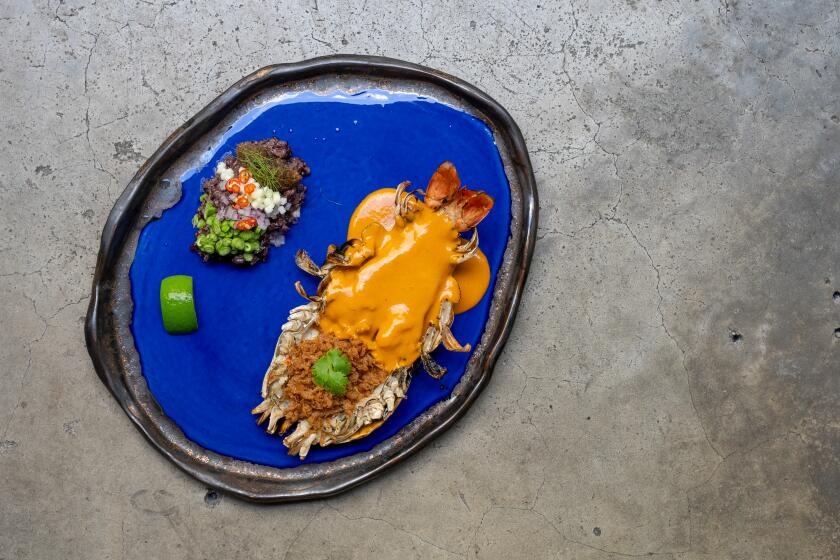Norsk salmon burgers

It’s Monday evening and Amuse Cafe is closed. But upstairs, in the main dining room, half a dozen people sit at a long table covered with plates of mini-marshmallows, sliced nuts, M&Ms and shredded coconut, waiting for the holiday desserts class to begin.
A waitress comes around with grilled asparagus and toasts topped with sauteed maitake mushrooms, a little snack before the action. Then Brooke Williamson, the affable young chef, reviews the plan for the evening: pumpkin cakes, chocolate cookie ice cream sandwiches, and to finish, caramel apples.
But first, she asks everyone to prepare their apples -- medium-sized Granny Smiths -- by jamming a pair of chopsticks, skinny side down, into the stem end. It takes some muscle. Williamson says chopsticks work better than Popsicle sticks. “They stay in and they’re really sturdy,” she explains. “And they’re long enough so that beginners, when dipping into hot caramel, won’t burn themselves.”
More and more area restaurants are offering regularly scheduled cooking classes. Besides Amuse in Venice, they include La Cachette in Century City, Ciudad in downtown Los Angeles, Josie as well as Juliano’s Raw in Santa Monica, and the Depot in Torrance. Restaurant cooking classes are informal, held on off nights or weekend mornings in kitchens and dining rooms and sometimes even outdoors. The cost is usually between $50 and $100 per person.
Chefs aren’t teaching these classes for the big bucks, but for the connection. It’s like an author doing a reading. You have to give a little something back to your biggest fans, or in this case, your diners. Besides, most of them seem to have fun doing it. It’s a break from the usual fast pace and high drama of the kitchen, but it’s still cooking.
For participants, it’s a chance to get acquainted with a favorite chef, enjoy tastes of dishes being demonstrated, hang out with other food and wine lovers, and add a few choice recipes to their repertoire.
A restaurant cooking class beats watching chefs on TV, says Julie Wu, 29, an accountant from Santa Ana who recently took a paella class at Ciudad. “You get to taste what the recipe is supposed to taste like. That way when you go home and make it, you know if you messed up.”
Besides, there’s a scripted perfectionism to most on-screen cooking. “On TV, everything is prepared for them and nothing’s going to go wrong,” says Williamson. There’s no room for detours and tangents, often the most edifying -- if not entertaining -- parts of restaurant cooking classes.
For instance, at the paella class at Ciudad, attendees were treated to a long list of things co-owner Mary Sue Milliken hates. Among them: plastic cutting boards “because they kill your knives,” pepper shakers because “they give you no control,” old garlic, green mussels and chicken breasts, especially skinless chicken breasts.
Milliken’s class, which she taught with Ciudad executive chef Randy St. Clair, ranged through an entire dinner-party menu, including spiced almonds and marinated olives, a salad with romaine hearts, plantain and poblano chile, and dessert of sangria jellies and melon ice cream.
For the main dish of paella, she says: “The important thing is to use really good paella rice and a great paprika.” It takes time to make, but “you get a lot of bang for the work. It’s such an impressive, perfect thing for people to make at home.”
The Depot’s Michael Shafer tells stories in his monthly classes and shares tricks. But mostly he wants people to go home inspired to cook. So he chooses the dishes he presents very carefully.
“I want to give people something with products that are readily available in any local market,” he says, “and I don’t want them to attempt something that is so difficult that they can’t enjoy the company they’ve invited over to dinner.”
Shafer’s salmon burgers, prepared and sampled at a seafood class, are easy to make and rewarding to serve. Moist and flavorful inside, the burgers have a crunchy crust of panko bread crumbs that helps them keep their shape. Sweet mustard sauce adds the kind of finishing touch that’s second nature to a restaurant chef, but sometimes a revelation for the home cook.
Williamson likes to keep things simple in the classes at Amuse, and she tries to introduce students to new cooking methods and ingredients they might normally shy away from.
At the desserts class, her intense chocolate cookies were a hit. Nice and soft and dotted with crunchy bits, the cookies are delicious on their own. But Williamson uses slightly softened mint ice cream to make them into miniature ice-cream sandwiches. These cookies are ideal for sandwiches, she says, because they stay moist. “The worst thing you could do for an ice-cream sandwich is make a really crunchy cookie,” she explains.
Now we know.
Combine the mustard, brown sugar, vinegar and one-fourth cup mayonnaise to make a sweet mustard sauce. Set aside.
Pulse the salmon in a food processor to chop coarsely.
Mix the salmon, onions, capers, parsley, salt, pepper and the remaining mayonnaise in a medium bowl. Add one-fourth cup panko bread crumbs.
Form the mixture into six equal patties, then lightly coat the patties with the remaining panko.
Heat the olive oil in a large skillet over medium heat and add the salmon patties. Cook until golden brown on both sides, about 7 minutes total. Serve on toasted rolls with the sweet mustard sauce.
Get our Cooking newsletter.
Your roundup of inspiring recipes and kitchen tricks.
You may occasionally receive promotional content from the Los Angeles Times.















